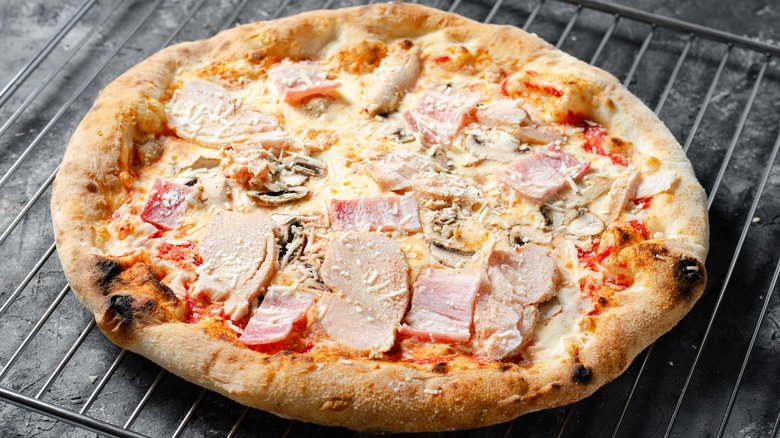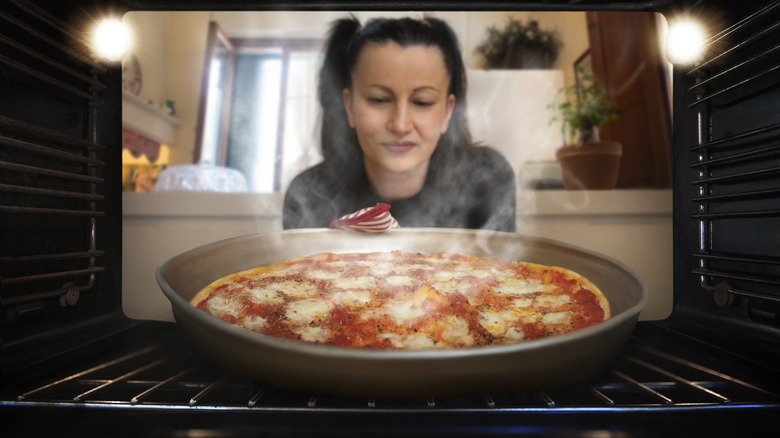Why You Should Thaw Frozen Pizza Before Tossing It In The Oven
To obey or not to obey? When it comes to the instructions on packaged food, some home cooks — and even professional chefs — argue that ignoring a food-maker's cooking instructions can sometimes lead to a better end result. Such is the case with that popular freezer staple, pizza. While most frozen pizza packages specifically say "do not thaw," many insist you should disregard this common box instruction.
Partially thawing a pizza before baking (around 30 minutes on the counter) can result in more even heat distribution during cooking, yielding an improved texture and a crisper crust. A brief counter defrost also makes it easier to rearrange the toppings, which is one of the many ways to elevate frozen pizza.
Let's face it: Factories aren't exactly focused on creating a visually balanced masterpiece when placing toppings on frozen pizza. A frosty pie often comes with lopsided meat and veggies (all the pepperoni on one side, for instance, or bare spots with no toppings at all). Thawing it for enough to loosen the toppings, so they're no longer icily adhered, allows you to shuffle and evenly distribute them for better flavor balance.
More tips to elevate your frozen pizza
Another way to elevate your in-home pizza experience is to ignore the manufacturer's recommended cooking temperature and time. Restaurants cook their pizzas at much higher temps for faster, more even baking. While your household oven probably can't reach the 900 degrees Fahrenheit of a restaurant pizza oven, you can push it to its limit (between 500 and 550 degrees Fahrenheit for most home ovens) to achieve a more pizzeria-like result. Just don't use the broil setting. At this higher temperature, your cooking time will be reduced, so keep a close eye on your pizza. Take it out when the cheese is well-melted and starting to brown, and the crust looks nice and golden.
Using a preheated pizza stone or baking sheet can further improve your meal by ensuring heat is efficiently distributed for a crust that's crispy and evenly baked. Starting your pizza bake on an already-hot surface means the crust will begin cooking immediately, helping it keep pace with the toppings.
Starting with a high-quality product will also help your pizza endgame, so check out our list of frozen pizzas ranked from worst to best. All the cooking hacks in the world may not be enough to save a low-caliber pie (like that one frozen pizza we're never buying again), so start strong with a well-made option.


